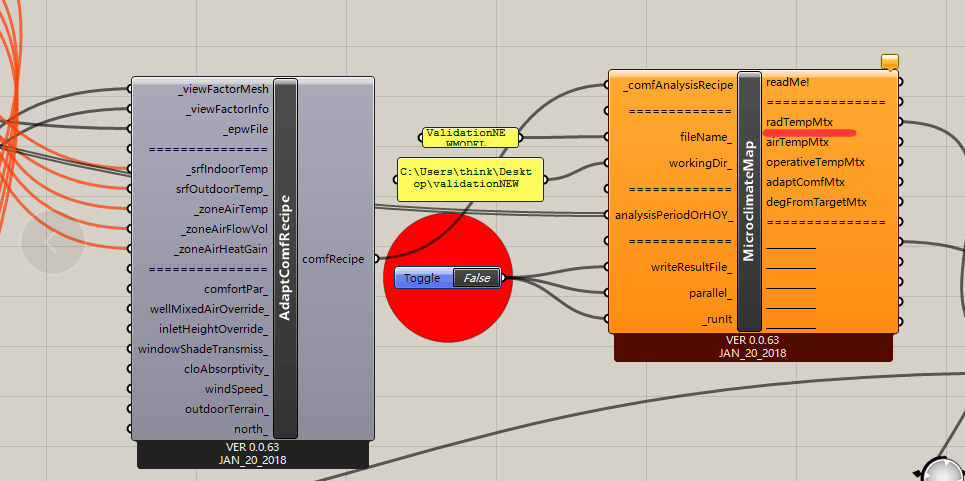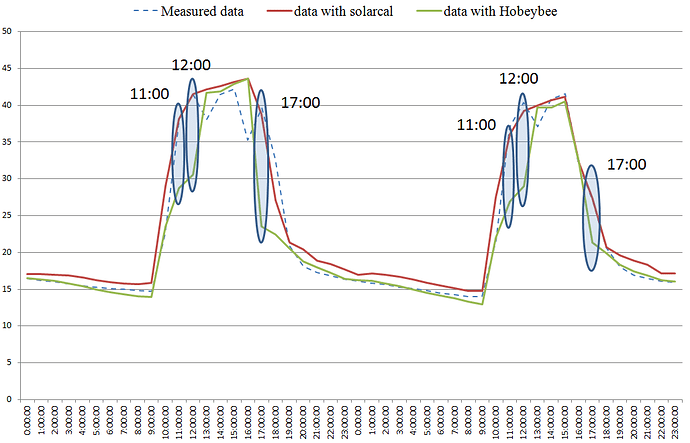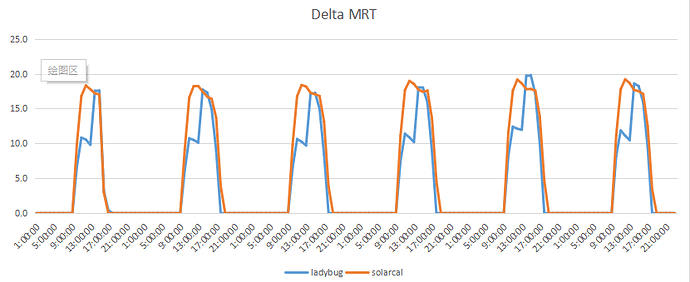Hello,everyone.
I have some questions about using Hobeybee to calculate solar adjusted MRT. As I understand, Honeybee uses Solarcal’s method to calculate solar-contributed MRT(△MRT), and then with the base MRT to obtain the solar adjusted MRT. The figure1 shows the method in Honeybee.
Now I use three methods to validate the solar adjusted MRT computed by Honeybee.
(1)Comparision with the measured MRT data. (all meteorological data inputs are measured data,Measurement period is from December 23 to January 31). Simulaton results are basically consistent at most of the time, but daily values at 11:00, 12:00 and 17:00, and 18:00 are significantly lower than the measured MRT data(Figure2).
(2)We first sse HB’s openstudio component to calculate base MRT, then use the SolarCal function of CBE Thermal Comfort Tool to compute △MRT , and finally we obtain the solar adjusted MRT according to baseMRT+ΔMRT (Figure 2). It was also found that the daily results at 11:00, 12:00, and 17:00 were significantly lower than the measured data.
(3) We used Ladybug_Outdoor Temperature Adjustor to build indoor microclimate map for △MRT. and compared them with the △MRT computed by Solarcal tool. Great differences were still found at 11:00 and 12:00 while there is good agreement at most of other time(Figure3).
Therefore, is there any reason to explain the disagreement in the results of solar adjusted MRT. Besides,
- When using Honeybee to calculate solar adjusted MRT, is it possible to report hourly result of Fsvv and Fbes?
- When using the Microclimatemap component to get solar adjusted MRT, is it possible to display the results of base MRT and △MRT separately?
Hope to get your reply.Many thanks.
MRT.gh (918.0 KB)
CHN_Tibet.Lhasa.555910_CSWD_DRYT_1.epw (1.5 MB)


